 Technology
Technology  Technology
Technology  Humans
Humans 10 Everyday Human Behaviors That Are Actually Survival Instincts
 Animals
Animals 10 Animals That Humiliated and Harmed Historical Leaders
 History
History 10 Most Influential Protests in Modern History
 Creepy
Creepy 10 More Representations of Death from Myth, Legend, and Folktale
 Technology
Technology 10 Scientific Breakthroughs of 2025 That’ll Change Everything
 Our World
Our World 10 Ways Icelandic Culture Makes Other Countries Look Boring
 Misconceptions
Misconceptions 10 Common Misconceptions About the Victorian Era
 Mysteries
Mysteries 10 Strange Unexplained Mysteries of 2025
 Miscellaneous
Miscellaneous 10 of History’s Most Bell-Ringing Finishing Moves
 Technology
Technology Top 10 Everyday Tech Buzzwords That Hide a Darker Past
 Humans
Humans 10 Everyday Human Behaviors That Are Actually Survival Instincts
 Animals
Animals 10 Animals That Humiliated and Harmed Historical Leaders
Who's Behind Listverse?

Jamie Frater
Head Editor
Jamie founded Listverse due to an insatiable desire to share fascinating, obscure, and bizarre facts. He has been a guest speaker on numerous national radio and television stations and is a five time published author.
More About Us History
History 10 Most Influential Protests in Modern History
 Creepy
Creepy 10 More Representations of Death from Myth, Legend, and Folktale
 Technology
Technology 10 Scientific Breakthroughs of 2025 That’ll Change Everything
 Our World
Our World 10 Ways Icelandic Culture Makes Other Countries Look Boring
 Misconceptions
Misconceptions 10 Common Misconceptions About the Victorian Era
 Mysteries
Mysteries 10 Strange Unexplained Mysteries of 2025
 Miscellaneous
Miscellaneous 10 of History’s Most Bell-Ringing Finishing Moves
10 True Stories Of Fascinating Naval Mutinies
The oceangoing mutiny is almost unheard-of today, given modern comforts and communication, but place a group of people in a cramped environment, surrounded by the absolute promise of death should they become stranded, and mutiny is an ever-present threat on long sea voyages.
It seems the most authoritative, fearsome captain in the world can only keep his crew in line if he follows the rule of being as kind and fair as he is strict. Here are the accounts of 10 real mutinies from various centuries, some of them famous, some not so.
10 Mutiny On The Bounty (1789)

By far the most famous historical mutiny, due in large part to its many dramatizations, this incident occurred on April 28 and 29, 1789, 2,400 kilometers (1,496 mi) west of Tahiti. The commander of the Bounty was 34-year-old Lieutenant William Bligh, whose mission was to sail to Tahiti and strengthen trade and diplomacy with the Tahitians, and specifically to experiment with the transplantation of breadfruit trees from Tahiti to the West Indies.
The voyage to Tahiti lasted 10 months at sea, after Bligh failed to round Cape Horn for a month and then sailed across the Atlantic and Indian Oceans. His treatment of the men during this time was not reported as overly harsh, but after a five-month stay in the paradise of Tahiti while the trees were cultivated, the crew naturally did not want to leave the beautiful, naked women for 10 more months cramped on the ship. Several of them attempted to desert, and this frustrated Bligh, who started venting his anger at his first officer, Fletcher Christian. He called Christian a “cowardly rascal” for letting the fear of naked savages interfere with the kegging of drinking water. “Rascal” was a potent insult at that time, and Bligh called other crewmen “lubberly rascals.” “Lubberly” is a pejorative term used against seamen, and means “clumsy,” or “inexperienced”; it was extremely offensive to sailors.
Once the return voyage was underway, the crew had grown to hate Bligh and though Christian agreed with them, he could not at first work up the nerve to lead a mutiny. Twenty-three days out into the open sea, Christian and several accomplices burst into Bligh’s sleeping quarters and brought him on deck as a hostage. Eighteen men mutinied, 22 refused, and 2 remained neutral. Christian refused to kill Bligh, and instead set him and 17 of his men adrift in an open, 7-meter-long (23 ft) launch. Christian, now in command of the ship and intent on returning to Tahiti, could not spare any charts for Bligh, but provided him with a sextant, a quadrant, a pocket watch, a compass, and some latitude and longitude tables.
These items are technically all that’s necessary to find one’s way on the open sea, but only an absolute expert can do so. Bligh famously navigated the launch and all but one of its men (John Norton, who was killed by cannibals on Tofua Island), to Kupang, Indonesia, a voyage of 6,700 kilometers (4,163 mi). Bligh sailed according to his memory of the stars, using the sextant and pocket watch to match his latitude and longitude to the tables. The journey lasted 47 days, and the men had sufficient rations to consume, twice daily, 18 grams (1/25th of a pound) of bread, 118 milliliters (1/4 of a pint) of water, and now and then 15 milliliters (half an ounce) of port wine and a teaspoon of rum.
Christian returned to Tahiti, and then sailed the Bounty to the uncharted Pitcairn Island. Those who fled to Pitcairn were not caught, but the 10 mutineers who stayed on Tahiti were arrested and tried. Of the 10, three were hanged, four acquitted, and three pardoned.
9 The Velos (1973)
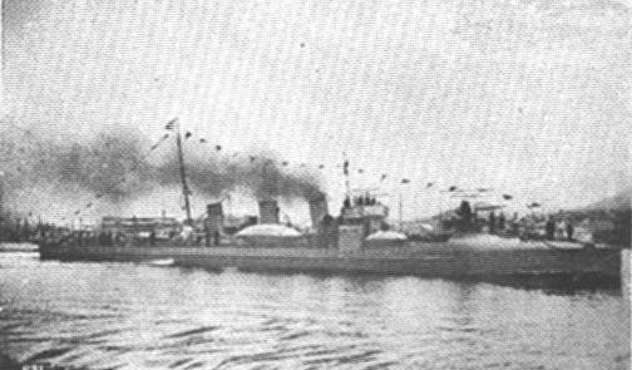
The Velos began its career as the destroyer USS Charrette in the American Navy. It saw action in the Pacific during World War II and was then sold to Greece, who renamed it Velos (“Arrow”). On May 25, 1973, a military junta had been in control of Greece for six years. Commander Nikolaos Pappas protested by sailing the Velos to Fiumicino, Italy and dropping anchor, refusing the direct orders of the Hellenic Admiralty to return to Greece.
While on an exercise between Rome and Sardinia, the ship heard over radio that naval officers had been arrested in Greece and tortured. Pappas deemed his actions necessary to motivate an international response to the junta. This mutiny was not of a crew against its captain, but of a ship against its entire admiralty. As commander, Pappas did not technically need the approval of his crew, since the ship was his to dispose of as he saw fit, but nevertheless he mustered them and announced his decision. The crew applauded. Pappas signaled his intention to the rest of the fleet, along with a quote from the Preamble of the North Atlantic Treaty. He then broke formation for Fiumicino.
Once there, he sent officers ashore to phone international press agencies and report the situation. This brought the news to the rest of the world. The entire crew signed a request to follow Commander Pappas’s lead, but Pappas and his officers convinced them to return to Greece for the sake of their families. The junta was overthrown on July 24 of the following year; Pappas eventually reached the rank of Vice Admiral, retiring in 1990. He died in 2013.
8 The Jean Bart And The France (1919)
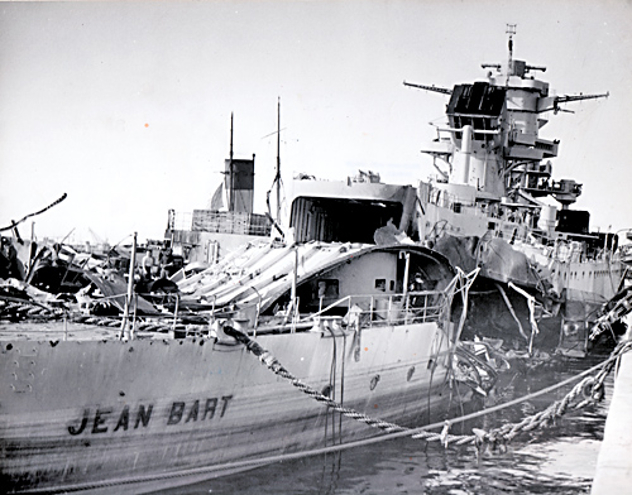
These two were identical French battleships sent into the Black Sea in April 1919 to assist the anti-Bolshevik White Russians against the Reds in the Russian Civil War. The Allies of the recently concluded World War I sided with the Whites.
The crews of both battleships supported the Reds, not the Whites, but this was not the impetus for their mutinies. The ships had been stationed in the Black Sea for 44 and 43 days to assist the Whites’ defense of Sevastopol. Portions of both crews were given shore leave in Sevastopol. The crews of both ships had specific grievances, and these had little to do with their approval of the Bolshevik cause. Their first grievance was the fact that they were still at sea fighting when World War I had ended and they wanted to go home; they felt they had done enough of their duty. Their second was that the food on board was of insufficient quantity and absolutely intolerable quality.
The ringleaders were Andre Marty, a mechanical engineering officer on the Jean Bart, and Charles Tillon on the France. Since the crews of several hundred were almost unanimously in agreement, the commanders and officers could not stop them, and the mutinies were carried out with a relative lack of violence. On the night of April 19 (Good Friday), the 200 or so sailors on shore refused to obey any further orders. The boiler crews on the France then refused to begin stoking the furnaces the next morning. When dawn broke, the mutiny resumed and in perfect unison, the crews of both ships mustered on decks ignored all commands. They then ran up the red flag of mutiny on both mainmasts. The commander of the Jean Bart was still well-liked by the crew and succeeded in getting someone to obey his order to lower the flag, after which the commander personally ripped it to pieces.
The crew of the France left their mutiny flag flying and controlled an entire section of their ship, then refused the direct order of Vice Admiral Jean-Francois-Charles Amet (who was aboard the Vergniaud) to sail for Constantinople. The crew of the Vergniaud remained neutral until a Greek military detachment on the French side opened fire into the mutinying sailors on land. Two civilians were killed, six French sailors were wounded, and one of them died shortly thereafter. This prompted the Vergniaud’s crew to side with the mutineers, and Amet no longer had any choice but to acquiesce to their demands.
The ships departed for home, and upon arrival, Marty and Tillon were arrested and sentenced to 20 years’ hard labor. They were released after five.
7 The Wager (1741)
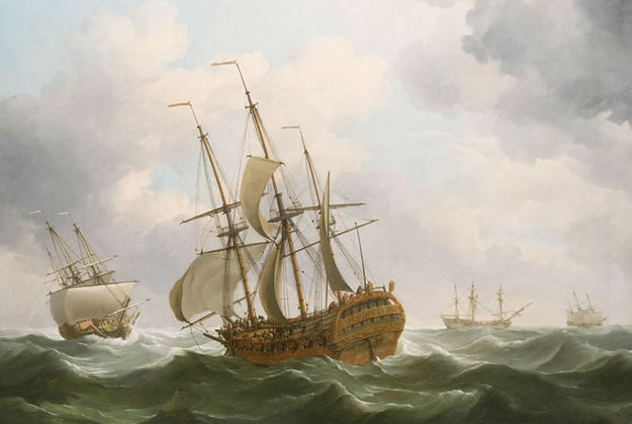
HMS Wager was an armed frigate of 24 cannon and 120 men, captained at the time by newly promoted David Cheap, who had a bad habit of denigrating his crew when they did not perform their tasks to his satisfaction. Wager was one of six ships in a fleet commanded by Commodore George Anson, whose mission was to circumnavigate the world and attack Spanish interests he found along the way. Cheap was the third captain to helm Wager during this voyage, and in 1740, when the voyage began, there was still no reliable method by which to calculate longitude. Dead reckoning was used, and most able seamen were very skilled at it, but it requires clear line of sight to fix one’s position by way of a known course and meticulous calculations of the ship’s speed. In stormy weather, it is impossible.
When Anson sent the fleet around Cape Horn, South America, the result was disaster. Rounding the Horn is possibly the most difficult task for any seafarer using sails, because the sea there is almost always very rough, and storms arise very quickly. By the time the fleet had crossed the Atlantic to the Horn in March 1741, it had been at sea for seven months, and most of the 1,854 men in the fleet were severely sick with scurvy and too weak for duty. Anson succeeded in rounding the Horn, but this took about a month. By late April, the Wager was operating with only 12 men out of 120 fit for duty, and it had lost sight of the rest of the fleet in a severe storm. Wager attempted to sail north and sighted land, but on May 13, the weather turned bad again and the ship could not reach land safely before nightfall. It wrecked on what is now known as Wager Island, in the Golfo de Penas (Gulf of Distress), off the west coast of Chile. The impact killed 45 men, who either drowned or were crushed. The anchor broke loose and plunged through the hull into the ocean, but the ship did not sink because it was wedged between two rocks.
The ship effectively sank on May 15, drowning some of the drunken crew; about 100 men made it to shore, but winter was coming and they had little food and were already sick with scurvy. There was very little wildlife, and the only perishable in large quantity was rum. The crew largely blamed Cheap for what had happened, and they preferred Gunnery Officer John Bulkley’s leadership at this point. Bulkley pleaded with Cheap to allow the carpenter to refit their launch into a longboat that would hold most of the crew and use this to return north along the east coast of South America to Brazil. Natives arrived after a few days and brought crabs for them to eat.
Cheap’s sense of duty dissuaded him from this plan and he ordered the crew to sail in the longboat north along Chile’s coast, to try to catch up with Anson’s fleet. This was the decision that brought about the mutiny. On October 9, the crew had finally had enough and they arrested and bound Cheap in his hut. With the longboat ready for the voyage, the crew prepared to get under way on October 13, but Cheap refused to go and requested to be left behind. The crew were happy to do so, since they knew that he must certainly die there, and be unable to tell his side of the story.
However, he did not die, and even made it back to England. Of the 79 mutineers who sailed for Brazil, 49 starved to death, drowned, or were marooned. The only survivors of Cheap and his 19 men were Cheap, Midshipmen John Byron (the grandfather of poet Lord Byron) and Alexander Campbell, and Marine Lieutenant Hamilton. Their party was found by local natives who spoke Spanish and guided them to a small village. Of those who made it back to England, Cheap was promoted Post Captain and given command of a 40-cannon ship. The mutineers were not prosecuted because the public had become enamored with their incredible survival across more than 5,000 kilometers (3,100 mi) of open sea and horrible weather.
6 The Seringapatam (1814)
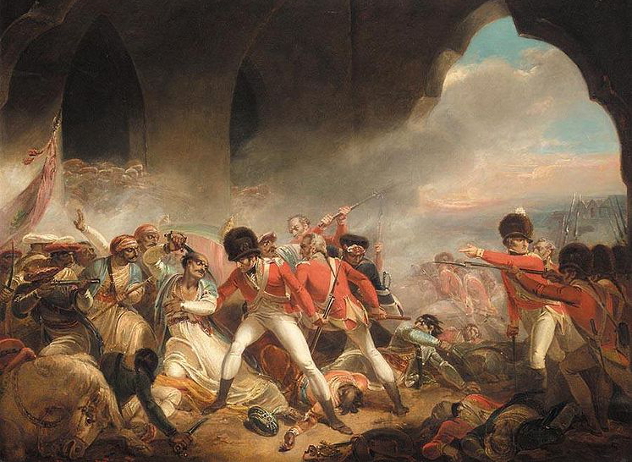
The Seringapatam, named for the Indian city Srirangapatna, was a warship laid down in 1799 for Tippu Sultan, ruler of the Kingdom of Mysore, in southern India, and the ship had a storied history. It was not long in India’s service, since the British besieged the city and killed Tippu in battle, then took the ship as a prize. The admiralty did not want it, and it was sold into the whaling business. On July 13, 1813, the Greenwich, a British ship captured by the US Navy, which was at war with Britain, captured the Seringapatam off Tumbes, Peru.
The Seringapatam suffered damage during the capture, but the loss of no hands, and was repaired and upgraded to 22 cannon at Tumbes. American Captain David Porter, in command of the fleet of captured ships, then decided that his ship, the USS Essex, should sail for Nuku Hiva, of the Marquesas Islands, almost 4,800 kilometers (3,000 mi) away, for provisions and repairing. He embarked with the Seringapatam, the Greenwich, the Sir Andrew Hammond, and the Essex Junior as prizes.
Once the refitting was completed, Porter sailed in Essex with the Essex Junior on December 12 for Chile, leaving Seringapatam, Greenwich, and the Sir Andrew Hammond at Nuku Hiva. He left the island under the command of Marine Lieutenant John Gamble, who, by April of the next year, had grown impatient for Porter’s return. Gamble prepared to leave the island with Seringapatam and Sir Andrew Hammond, and on May 7 gave a routine order which the crew openly refused to obey. Gamble tried to force his authority on them, but eight mutineers were still able to overpower him and two midshipmen and lock them up below deck. The mutineers then freed six British prisoners of war and set Gamble, the two officers, and two others adrift before sailing the Seringapatam to Australia.
Gamble managed to sail his launch back to Nuku Hiva and then sail the Sir Andrew Hammond to Hawaii where he was taken prisoner by the British. The mutineers landed Seringapatam at Port Jackson, New South Wales on July 1, 1814.
5 The Somers (1842)
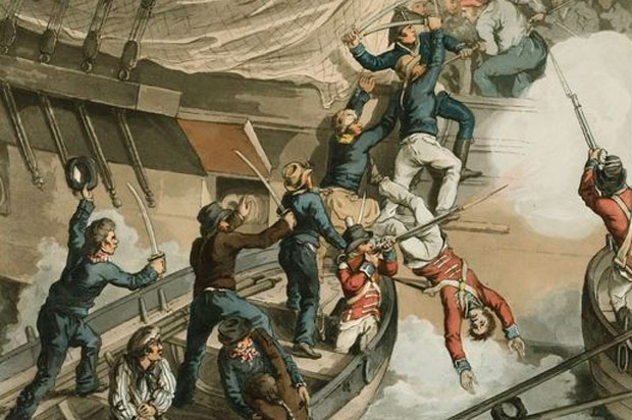
The USS Somers was an armed, two-masted brig that experienced the only naval mutiny in US history to result in executions. While on voyage from Monrovia, Liberia to the Virgin Islands in the Caribbean, Commander Alexander Mackenzie was informed on November 26 by steward J.W. Wales that Midshipman Phillip Spencer, son of Secretary of War John Spencer, had told him the night before of a plan to mutiny, which had already been joined by some 20 crewmen, for the purpose of turning the ship to piracy.
Mackenzie did not initially consider the threat serious but told First Lieutenant Guert Gansevoort, first cousin of author Herman Melville, to watch Spencer closely. Other crewmen told Gansevoort that Spencer had been speaking in secret with Boatswain’s Mate Samuel Cromwell and Seaman Elisha Small, so Mackenzie confronted Spencer with the allegations that evening. Spencer claimed the whole thing had been a joke, but this did not satisfy Mackenzie, who had him clapped in irons below decks. Spencer’s quarters were searched and a letter was found, written with Greek letters, apparently to disguise it contents.
Unfortunately for Spencer, Midshipman Henry Rodgers also knew Greek and translated it: It was a list of officers and crew labeled “Certain,” “Doubtful,” and “Nolens Volens.” The last term means “unwilling/willing,” meaning those men who could swing either way. The letter read, in part, “Those doubtful marked (+) will probably be induced to join before the project is carried into execution. The remainder of the doubtful will probably join when the thing is done, if not, they must be forced.”
Mackenzie made no more arrests until the next day, when a mast broke in half and brought down some of the sails. Cromwell, the largest man on the ship, was questioned about his meetings with Spencer and contended that he had not met with him, but that Small had. Small admitted his part, and both were clapped in irons. The next day, November 28, steward Henry Waltham was flogged for attempting to steal brandy for Spencer, and then flogged again the next day for planning to steal three bottles of wine. Sailmaker’s Mate Charles Wilson was caught trying to steal a weapon, and that evening, two more men did not arrive for their watch duties.
Four more men were arrested and Mackenzie then had all the officers interview the enlisted men to determine the extent of the mutiny. On December 1, they concluded that Spencer, Small, and Cromwell were guilty of planning to commit full mutiny. The ship was only 13 days out from port, but Mackenzie considered that the quality of confinement was inadequate. So to be sure of keeping order, he immediately had the three men hanged from the yardarm and buried at sea. There were no more prosecutions, and Mackenzie was exonerated.
4 The Jason (1796)
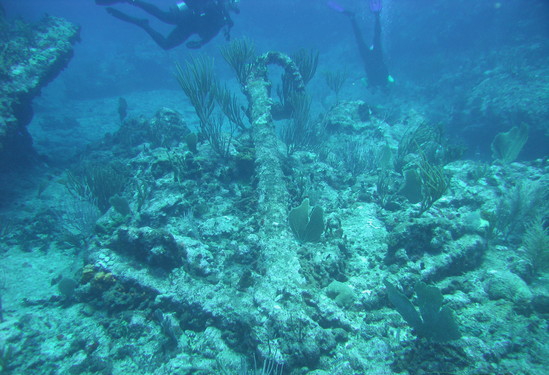
The Jason was a Dutch fifth-rate frigate with 36 cannon and a complement of 230 sailors that suffered a mutiny in February 1796 at Drontheim, Netherlands. The disagreement was over the enlisted men’s opinion that their work conditions were intolerable, and the sailors were able to imprison Captain Gerardus Donckum below deck and then sail to Greenock, Scotland, arriving on June 8. The HMS Penguin, captained by J. Pulling, took charge of it and the Jason’s crew of 230 surrendered. A great party of men from the Sutherland Fencibles regiment was dispatched from Glasgow to take possession of the boat. The crew then volunteered for British naval service.
The British took permanent possession of the ship, reduced its armament to 32 guns, and rechristened it HMS Proselyte. It sank on September 2, 1801, after running aground on the Man of War shoal, off Philipsburg, Sint Maarten, in the Caribbean. The wreck is an active dive site (pictured above).
3The Cattaro Mutiny (1918)

This mutiny took place in port and on land, in the naval base of the Bay of Kotor (Cattaro), Montenegro, on the Adriatic Sea. The Austro-Hungarian navy saw a lot of action in World War I, taking part in the Battles of Durazzo and the Otranto Straits, and by 1918, the sailors of some 40 different ships of the 5th Fleet had grown so sick of the war that they organized a revolt on February 1. The dissension began on flagship Sankt Georg at lunchtime, when the ship’s orchestra was interrupted. This drew the ship’s captain (Egon Zipperer von Arbach) outside to investigate and he was shot in the head, but not killed, by Jerko Sizgoric.
The mutineers would at first not let the ship’s doctor treat him, meanwhile arming themselves in the magazine. The ship’s complement was comprised of Germans, Austrians, Croatians, and Slovenians, and the latter two nationalities led the way. This prompted the former two to arm themselves because they did not trust their comrades. The mutineers spread the word throughout the harbor, taking the largest ships first and confining all officers to their quarters. By 2:30 PM, the red flag of mutiny flew over all ships but the submarines.
The mutineers presented Rear Admiral Hansa a list of demands, half of which consisted of better conditions, including more shore leave, while the other half dealt with demands to end the war by negotiating peace; they even mentioned Woodrow Wilson’s “Fourteen Points.” The political demands went largely unheeded, but Hansa attempted to secure some of the personal demands, however this did not put an immediate end to the mutiny. On land, a German artillery master, Oskar von Guseck, opened fire on the Kronprinz Rudolf from the shore batteries and killed one sailor. Several were wounded, and this demotivated many of the mutinous ships, which struck their red flags and steamed closer to shore away from the Sankt Georg.
The Sankt Georg’s mutineers would not give up, and the navy’s now re-allied ships were on standby to sink it at 10:00 AM on February 3 if the mutineers would not yield. The unanimity displayed by all the Austro-Hungarian battle flags finally convinced the Sankt Georg’s mutineers to vote, and they voted to surrender. Of the 392 charged with crimes, 348 were acquitted. On February 10, the four ringleaders, including Sizgoric, were executed by firing squad.
2 The Saladin (1844)
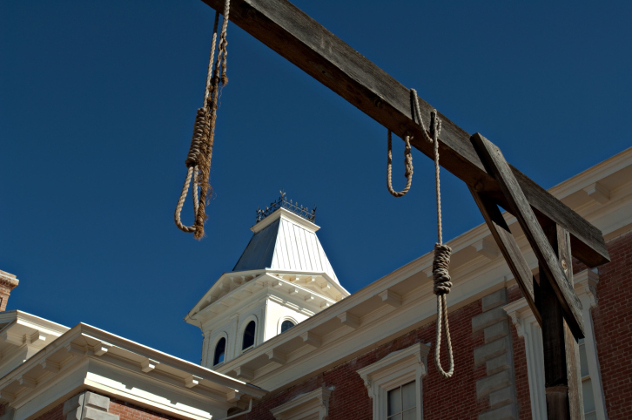
The Saladin was a British cargo ship that sailed from Valparaiso, Chile on February 8, 1844 bound for London. It carried $9,000 worth of gold and silver coins, 70 tons of copper, 13 bars of silver, and guano (used as fertilizer). The mutiny occurred during the voyage south around Cape Horn then northeast for England. On May 21, 1844, the ship was stranded off Harbour Island, Nova Scotia, Canada. Captain William Cunningham of the Billow boarded and found only six men, who claimed that the captain had died seven or eight weeks prior, all the officers soon after, and that the rest of the crew had drowned.
Cunningham had them all arrested for murder and piracy. The six men’s statements at trial told the story that Captain George Fielding, who was only a passenger and not the captain of the ship, discovered the wealth of the ship’s cargo and then persuaded three seamen to mutiny, kill the officers, and take the loot. After this, while scouring the ship for the treasure, Fielding tried to persuade the crew members to turn on each other, since the fewer men would share greater wealth. Thus, the crew threw Fielding and his son overboard and then tried to sail for the Gulf of St. Lawrence, but ran aground at Nova Scotia.
Four of the mutineers were hanged. The other two were the cook and the steward, William Carr and John Galloway, who were acquitted.
1 The Mutiny At Wilhelmshaven (1918)
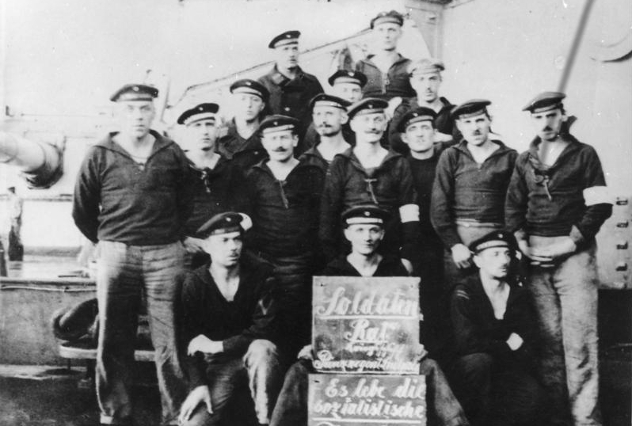
Wilhelmshaven is a German port on the North Sea. In 1916, the Germans and British fought the Battle of Jutland (the largest surface naval battle in world history until World War II), the result of which was inconclusive. The Germans did sink more tonnage, but could not break the British naval power in the North Sea, after which the German High Seas Fleet withdrew to various ports and became inactive. Inactivity dooms military morale. If you give soldiers or sailors targets to blow up, they’re happier than when they have nothing to do. The German submarine fleet remained active, and the surface sailors felt they were missing out on the action.
Two years later, having done very little of anything and suffering low rations all the while, German sailors on multiple ships, and on shore leave in Wilhelmshaven, coordinated a refusal, on October 29–30, to obey any more orders. The fleet was ordered to weigh anchor in anticipation of a battle in the Channel, which never took place. The crews of SMS Helgoland and Thuringen refused to do so, and the next morning, torpedo boats trained their guns on these ships. This quelled the mutineers for the time being, and anchors were weighed.
The fleet sailed out from port and Vice Admiral Hugo Kraft performed a maneuver with all the battleships that went flawlessly. This indicated to him that he had regained command of the men, so he had 47 sailors of the Markgraf imprisoned in the brig, then taken onshore to Fort Herwarth, in the town of Kiel. These men he deemed the ringleaders of the mutiny, but by imprisoning them, he simply reopened the wound. The sailors on all the ships of the fleet now refused to weigh anchor and leave Kiel until their comrades were released. Their demands at first went ignored by the naval officers’ staff in the area, so the sailors appealed to the local civilians in various labor unions, and these people took their side.
Now a mob of several thousand, they could not be ignored, and they marched on the prison, demanding that the sailors be set free. A Lieutenant Steinhauser was ordered to disperse them with a platoon of soldiers, and he had his men fire into the crowd. Seven protesters were killed, 29 wounded, and the protesters returned fire, severely wounding Steinhauser. This is now widely considered the beginning of the revolution that dissolved the German Empire and founded the Weimar Republic.
The exchange of fire resulted in a full-scale riot in Kiel, then another in Wilhelmshaven. More and more sailors mutinied and the 47 prisoners were released. By November 4, 40,000 armed sailors, soldiers, and laborers controlled Kiel. They made 14 demands to the German navy, most of them having to do with better treatment of enlisted men. Before these demands could be accepted or denied, the spirit of revolution had already spread into other towns and cities, until on November 7, people were joining the cause in Munich and King Ludwig III of Bavaria was forced into exile.








